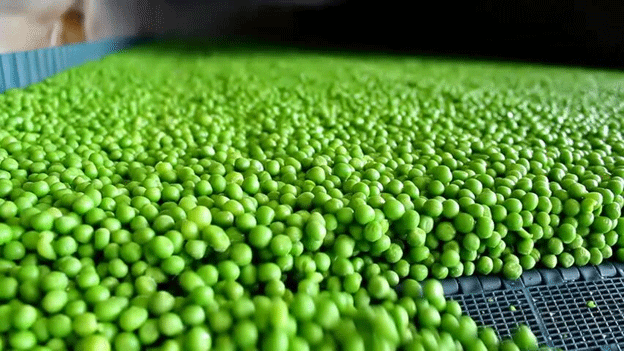Pea farming is a significant agricultural venture during the Rabi season, with many farmers starting preparations for sowing. This leguminous crop not only enriches the soil but also provides excellent nutritional value. To achieve optimal yields and maximize profits, it is essential for farmers to adopt scientifically-backed methods in cultivation. This article outlines expert recommendations from the Dr. Rajendra Prasad Central Agricultural University on effective pea farming practices.
Optimal Temperature for Sowing Peas
For successful pea cultivation, the ideal temperature for sowing ranges from 13 to 18 degrees Celsius. Farmers can also sow peas at a maximum temperature of 22 degrees Celsius. Sowing at lower temperatures may result in stunted growth and bushy plants, while higher temperatures could lead to elongated plants. Peas can tolerate temperatures as low as zero degrees Celsius, but dry or excessively warm conditions during flowering and pod formation can adversely affect plant traits and yield. Temperatures exceeding 30 degrees Celsius can negatively impact pod quality, a critical factor for marketability.
Choosing the Right Soil
Peas can be cultivated in various soil types; however, sandy loam soil is preferred due to its excellent drainage capabilities. Soil with a pH level between 6 and 7.5 is ideal for pea farming, as both acidic and alkaline soils can hamper production. Well-drained soils enhance the yield of green pods and seeds, which are vital for both consumption and market sales.
Recommended Pea Varieties
Experts suggest several high-yielding pea varieties for farmers looking to optimize their production:
- VL Matar 3: Known for its limited growth habit, this variety can yield 100-105 quintals per hectare.
- VL Matar 7: This dwarf variety is resistant to early blight and produces 85-95 quintals per hectare.
- Jawahar Matar 1: With pod lengths of 8-9 cm, it offers an impressive yield of 120-125 quintals per hectare.
- Jawahar Matar 4: Producing 90-110 quintals per hectare, this variety is well-suited for diverse conditions.
- Pant Uphaar: Reaches up to 70 quintals per hectare in yield after 70-80 days of sowing.
- Arkel: This variety, yielding around 50 quintals per hectare, is noted for its rich pod quality.
- Kaashi Shakti: With a yield potential of 40-60 quintals per hectare, this medium-duration variety is well-regarded in the industry.
Sowing Techniques
Pea sowing in the plains typically occurs from the first week of October to the end of November, while in hilly regions, it is sown between February and April. Timely sowing is crucial; delays can negatively impact yield and quality. For early varieties, a seeding rate of 125-150 kg per hectare is recommended, while for medium-maturing varieties, it should be 100-120 kg. Prior seed treatment with Carbendazim (2.5 g/kg) helps prevent Utkatha disease.
Weed Management
Weeds pose a significant threat to pea crops. Farmers are advised to employ manual weeding 25-30 days post-sowing. Application of herbicides like Alachlor or Pendimethalin within two days of sowing can effectively control weed growth, thus promoting healthier crop development.
Irrigation and Water Management
Proper moisture management is critical during sowing. If soil moisture is inadequate, farmers should ensure pre-sowing irrigation. The sprinkler irrigation method is recommended for optimal water distribution, promoting healthy growth and yield. Irrigation should continue as needed, especially before and after flowering, to sustain plant health.
Implementing scientific techniques in pea farming can lead to significant improvements in yield and profitability. From selecting the right variety and optimal sowing time to effective weed management and irrigation practices, farmers can protect their crops and enhance production. By following the expert guidelines outlined in this article, farmers are better equipped to maximize their returns and contribute to sustainable agricultural practices.
Error




